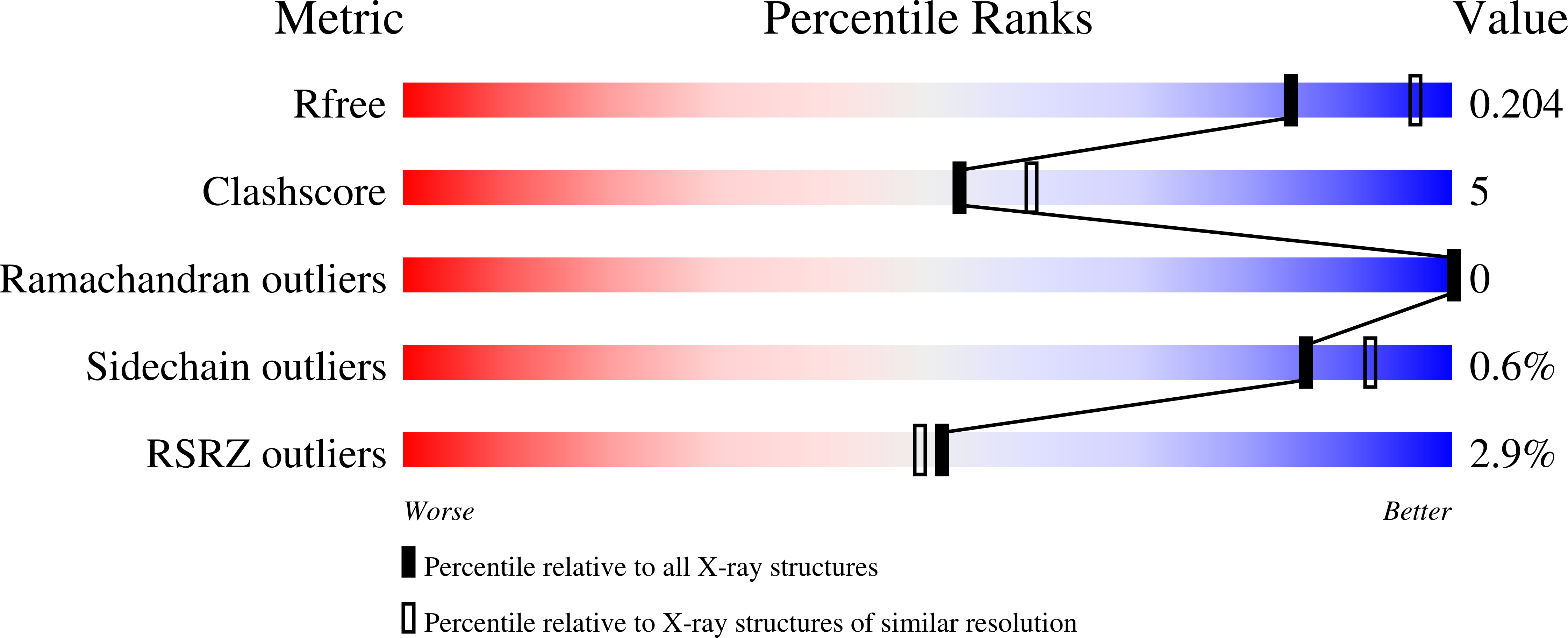Streptomyces wadayamensis MppP Is a Pyridoxal 5'-Phosphate-Dependent l-Arginine alpha-Deaminase, gamma-Hydroxylase in the Enduracididine Biosynthetic Pathway.
Han, L., Schwabacher, A.W., Moran, G.R., Silvaggi, N.R.(2015) Biochemistry 54: 7029-7040
- PubMed: 26551990
- DOI: https://doi.org/10.1021/acs.biochem.5b01016
- Primary Citation of Related Structures:
5DJ1, 5DJ3 - PubMed Abstract:
L-Enduracididine (L-End) is a nonproteinogenic amino acid found in a number of bioactive peptides, including the antibiotics teixobactin, enduracidin, and mannopeptimycin. The potent activity of these compounds against antibiotic-resistant pathogens like MRSA and their novel mode of action have garnered considerable interest for the development of these peptides into clinically relevant antibiotics. This goal has been hampered, at least in part, by the fact that L-End is difficult to synthesize and not currently commercially available. We have begun to elucidate the biosynthetic pathway of this unusual building block. In mannopeptimycin-producing strains, like Streptomyces wadayamensis, L-End is produced from L-Arg by the action of three enzymes: MppP, MppQ, and MppR. Herein, we report the structural and functional characterization of MppP. This pyridoxal 5'-phosphate (PLP)-dependent enzyme was predicted to be a fold type I aminotransferase on the basis of sequence analysis. We show that MppP is actually the first example of a PLP-dependent hydroxylase that catalyzes a reaction of L-Arg with dioxygen to yield a mixture of 2-oxo-4-hydroxy-5-guanidinovaleric acid and 2-oxo-5-guanidinovaleric acid in a 1.7:1 ratio. The structure of MppP with PLP bound to the catalytic lysine residue (Lys221) shows that, while the tertiary structure is very similar to those of the well-studied aminotransferases, there are differences in the arrangement of active site residues around the cofactor that likely account for the unusual activity of this enzyme. The structure of MppP with the substrate analogue D-Arg bound shows how the enzyme binds its substrate and indicates why D-Arg is not a substrate. On the basis of this work and previous work with MppR, we propose a plausible biosynthetic scheme for L-End.
Organizational Affiliation:
Department of Chemistry and Biochemistry, University of Wisconsin-Milwaukee , 3210 North Cramer Street, Milwaukee, Wisconsin 53211, United States.
















